 Accessible Playgrounds, also referred to as Inclusive, Barrier-Free or Universal Design Playgrounds, are becoming more common across the world.
Accessible Playgrounds, also referred to as Inclusive, Barrier-Free or Universal Design Playgrounds, are becoming more common across the world.
In many communities, families with disabilities are finally able to experience one of the most important activities we can engage in – PLAY.
For kids, playing offers all sorts of positive and crucial benefits in their learning, development, reasoning and confidence. For parents and caretakers, being able to actively engage in play with your children is a powerful opportunity for connection and making cherished memories. Plus, laughter, in itself, is great medicine.
 Accessible Playgrounds are Fun for the Whole Family
Accessible Playgrounds are Fun for the Whole Family
When one thinks of an accessible playground, your first thought is probably the benefit for kids with special needs. Giving these kids the chance to interact with their peers and share a common experience can be utterly life-changing for them. But, the kids aren’t the only ones who benefit.
At inclusive playgrounds, parents with disabilities also have a unique opportunity to participate in active play independently with their children. Grandparents with limited ambulation can also enjoy some quality time with their grandkids.
We talked with two rolling mamas – and friends of the Cure Nation – to find out what accessible playgrounds mean to them and how they recommend getting started in your own community.
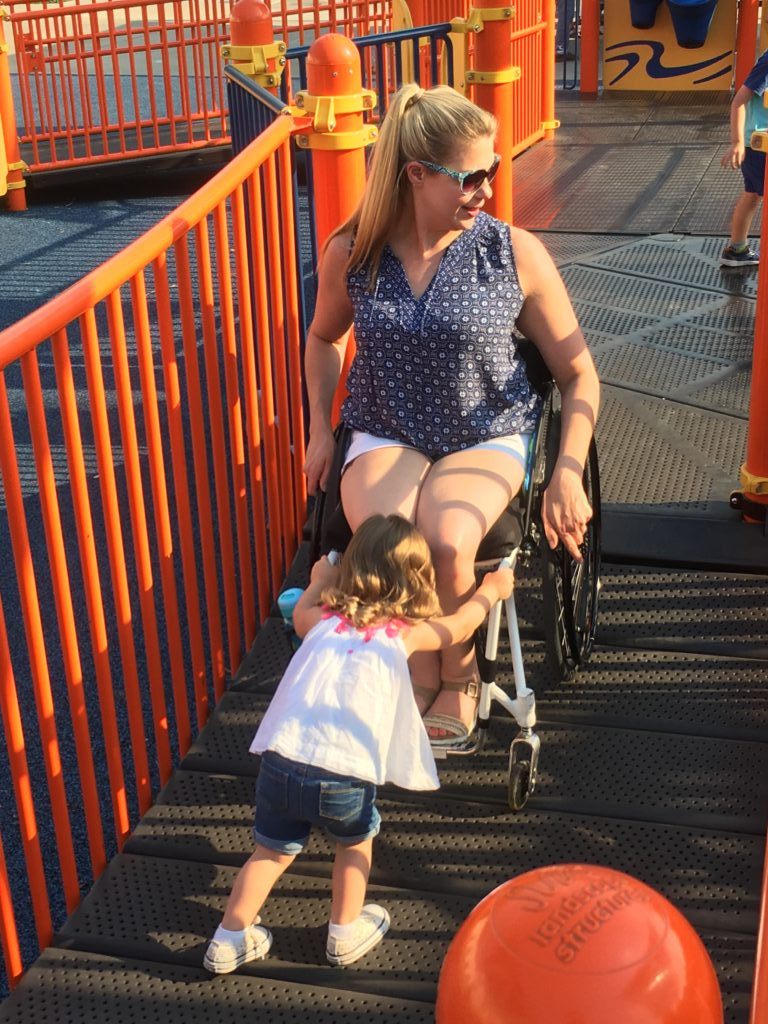 Michelle Colvard, of Houston, is a long-time disability advocate and mother of a two-year old daughter. She was involved with the creation of Houston’s first accessible playground, which opened in 2006, and several other playgrounds since – all before becoming a mom.
Michelle Colvard, of Houston, is a long-time disability advocate and mother of a two-year old daughter. She was involved with the creation of Houston’s first accessible playground, which opened in 2006, and several other playgrounds since – all before becoming a mom.
Growing up with spina bifida, Michelle remembers often feeling isolated from her peers during activities like recess and physical education.
“Playgrounds typically had a barrier around the playground, and always had either wood chips or gravel at the bottom which was extremely tough to roll a wheelchair through. I used a wheelchair for most of my childhood (I was in a wheelchair permanently after the fifth grade), and I remember looking up at the playground and watching while all of the other kids played.”
“For the most part, there wasn’t any way for me to join them from my wheelchair.”
Accessibility began to improve after the passage of the Americans with Disabilities Act (ADA), but it had very few requirements for playgrounds.
Michelle explains, “The law requires there to be a ramp up to them, but that is about it. If you use a wheelchair, there’s very little in a regular ADA-compliant playground that you can actually use. So we have to think beyond what’s legally required by the ADA, and think in terms of what kids with disabilities and parents with disabilities actually need.”
“These playgrounds are not just ‘accessible’ in terms of what’s required by the ADA, but they’re barrier-free – meaning that everyone, even someone in a wheelchair, can use these playgrounds.”
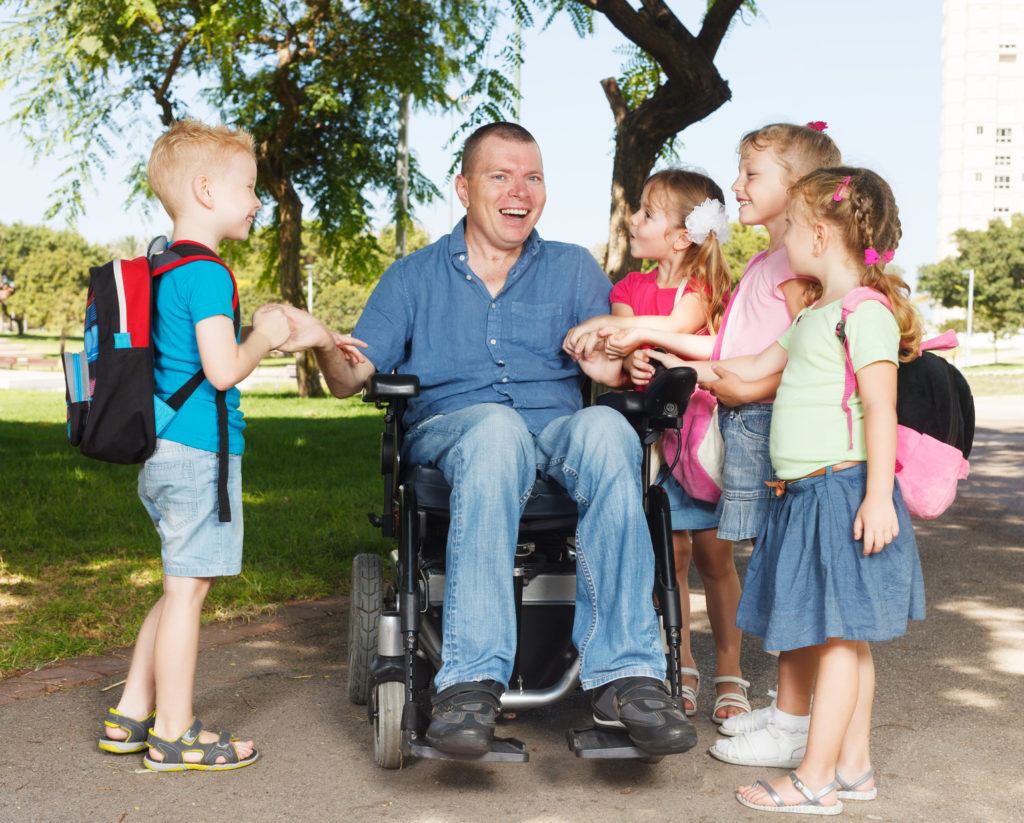
Michelle also shared, “An added bonus is that I think even kids without disabilities actually prefer the barrier-free playgrounds because they’re really unique and have some really cool features that all kids really enjoy.” Improved safety can also be an added benefit, as many of the designs feature smoother transitions, less stairs, etc.
Today, Michelle enjoys the various barrier-free playgrounds around Houston with her daughter and continues to be involved with building more.
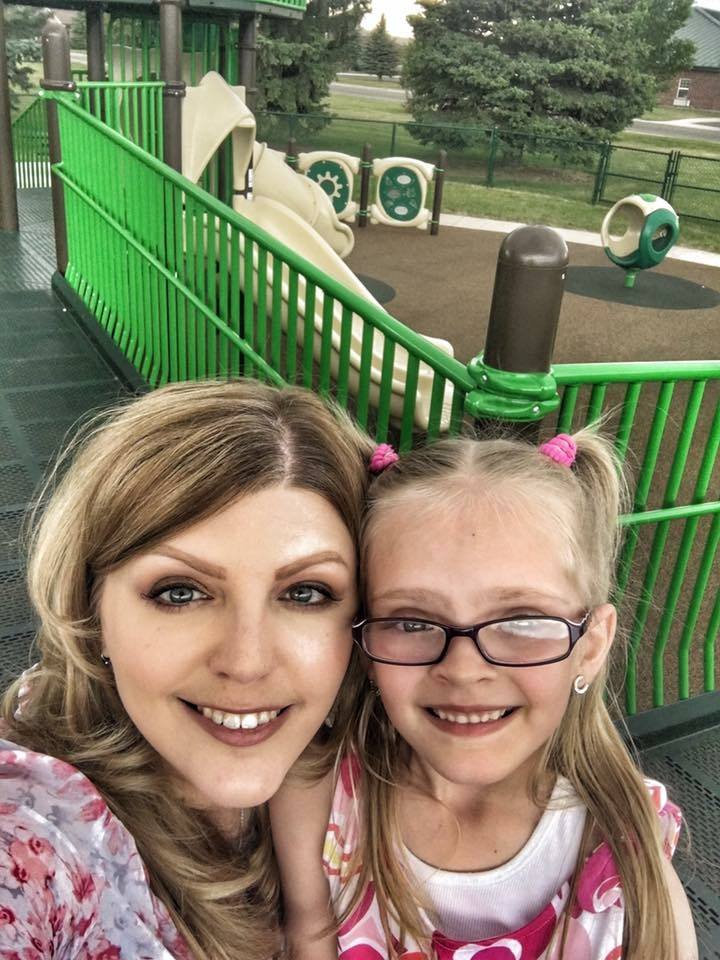 We recently published an article on speaker, advocate and outdoor enthusiast, Ashlee Lundvall, of Cody, Wyoming. She was instrumental in the creation of her local accessible playground, after discovering that she wasn’t able to be active at the playground with her young daughter.
We recently published an article on speaker, advocate and outdoor enthusiast, Ashlee Lundvall, of Cody, Wyoming. She was instrumental in the creation of her local accessible playground, after discovering that she wasn’t able to be active at the playground with her young daughter.
“After my ranching accident in 1999, being able to enjoy the outdoors saved my life. Since then, I have become an advocate for accessible outdoor recreation and helping people with disabilities remain as active as they can be. This project was a natural progression of that passion, and I am thankful to have been involved in something that allows more people with disabilities to enjoy an active, outdoor lifestyle.”
Ashlee became determined to open the first accessible playground in Wyoming after seeing one in Ohio while participating in the Ms. Wheelchair USA pageant in 2013.
Upon returning home, Ashlee found allies and supporters in her local community and got busy. After several years of hard work, her goal was achieved in Cody. Not long after, another was opened in Cheyenne and there are plans for more in other cities.
Do you wish you had an accessible playground near you? We put together some tips from Ashlee and Michelle, and added a few of our own.

Contestants at the 2013 Ms. Wheelchair USA Pageant visit the all-inclusive SOAR Park in Stow, Ohio.
Tips for Creating an Accessible Playground in Your Community
1. You Don’t Have to Do It Alone
A great first step is to find people that want to help or that have common goals. Reach out to agencies that are interested in the well-being of the city or community you live in, as well as organizations that serve people with disabilities.
Michelle recommends, “meeting with various community groups to see if you can leverage some support, or meeting with your city council member, or meeting with the director of your city’s parks and recreation department.”
Organizations that serve the disability community may also be a great resource. Try getting in touch with your local Independent Living Center, United Spinal or Spina Bifida Association Chapter. If you find local parents that would also benefit from an accessible playground, consider forming a committee to work on the project throughout completion.
2. Do Research and Consider Options
You’ll need to do some scouting in your community. Are there existing parks that could be improved or modified? Do you have an accessible location in mind if you’ll be building from scratch? This info is obviously necessary to find a location, but it’s also helpful data to have handy as you approach donors and sponsors.
For a list of inclusive and accessible playgrounds in the U.S., click here.
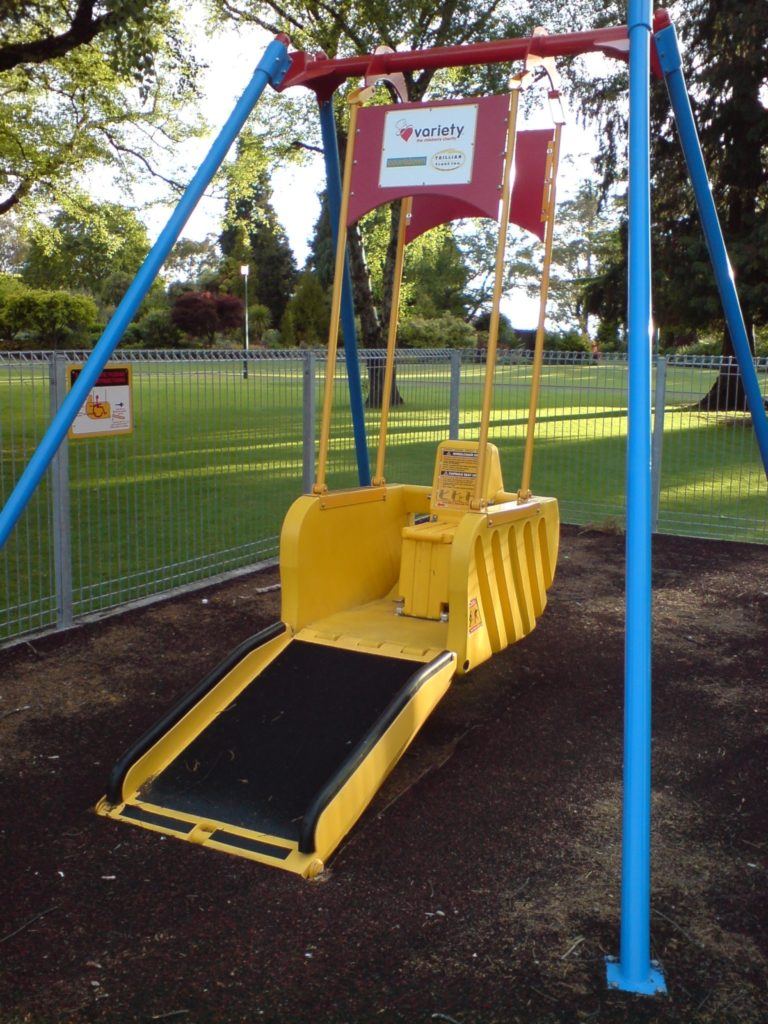
When looking at locations, either for new or rebuilt construction, Ashlee suggests considering a variety of factors, including the local surroundings and neighborhood, the age of the equipment and present need for renovations, existing infrastructure – such as parking, landscaping and sidewalks, and nearby facilities or amenities.
Once you’ve chosen a location with your partners, it’s time to talk with the people who can actually bring the inclusive playground to life.
Many designers will be able to offer several options for different budgets.
There are even companies out there that specialize in accessible playgrounds. Ashlee worked with Playworld Systems and reports that they were very knowledgeable and helpful.
3. Set a Budget and Raise the Funds
Accessible playgrounds are not cheap to build. In fact, building from scratch, they often cost two to three times the amount of a traditional playground. After talking with a designer, your team can decide on a specific design and get an idea for a starting budget. There will be more costs to consider, though – including costs associated with playground upkeep and often, unexpected costs can pop up during the building process.
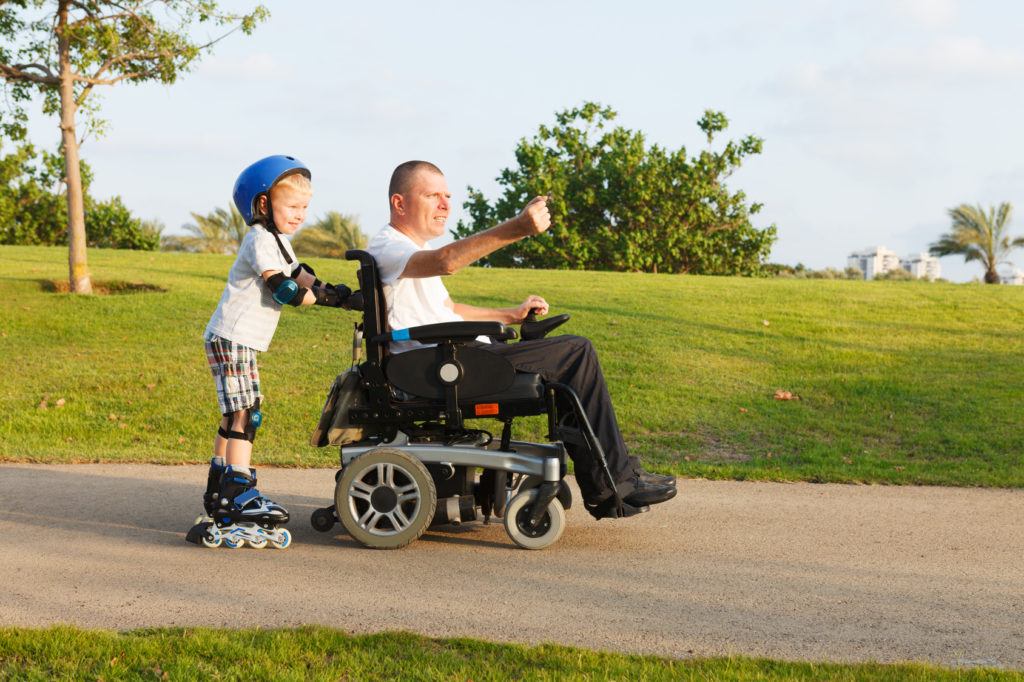 There are many ways to begin raising funds, but you’ll have the best luck with an organized plan. Most likely, your partners, including city employees, passionate parents and disability advocates, may have resources to help – so make sure everyone is on the same page. With their help, tap into any local grants, foundations or philanthropists that may be able to support your project.
There are many ways to begin raising funds, but you’ll have the best luck with an organized plan. Most likely, your partners, including city employees, passionate parents and disability advocates, may have resources to help – so make sure everyone is on the same page. With their help, tap into any local grants, foundations or philanthropists that may be able to support your project.
Live fundraising events like golf tournaments, 5Ks, charity banquets and silent auctions can be a great way to raise money, while also informing the community about the project. You can approach local businesses to become sponsors and donate money, food and/or items for auction. Online crowdfunding is also an option that has worked well for many.
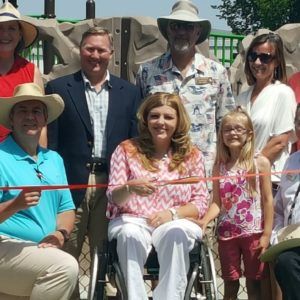 It’s not easy asking for money, but keep in mind that it’s for an important cause. Michelle reminds us how rewarding it can be for those who contribute.
It’s not easy asking for money, but keep in mind that it’s for an important cause. Michelle reminds us how rewarding it can be for those who contribute.
“One aspect about donating to these barrier-free playgrounds is that you can visibly see the benefit to the community, every single day. Very often, when someone donates money to a particular cause, you never really get to see where the money went. But these playgrounds are a lasting testament to the people who donated money to make them happen. The playground and bringing kids of all abilities together will be their legacy,” Michelle says.
4. Lastly, Have Patience!
This sort of project doesn’t come together overnight. Often, it can take years from the initial idea to the grand opening. So, be patient and stay focused on the goal!
Hey Parents! Cure Medical is excited to introduce our brand NEW Pediatric Hydrophilic Catheter.
Designed especially for kids and their concerned parents, this easy-to-use, water-lubricated catheter is not made with any scary chemicals like DEHP, BPA or natural rubber latex. Easy to use on the go, too, with no stains or mess!
The new Pediatric Hydrophilic Cure Catheter® is affordable and offers all the convenience of a ready-to-use catheter, without the stains or mess. Parents can also request a complimentary backpack that contains fun flash cards, educational guides and kids’ toys to accompany their Pediatric Hydrophilic Cure Catheter® sample.
VIDEO: TRY THE PEDIATRIC HYDROPHILIC CURE CATHETER®
This sterile, single-use hydrophilic catheter features polished eyelets with an straight tip. It is offered in 4 pediatric lengths for use by boys and girls.
 To request free samples of the Pediatric Hydrophilic Cure Catheter® or any Cure Medical catheter, contact your local distributor of quality healthcare products, or click here.
To request free samples of the Pediatric Hydrophilic Cure Catheter® or any Cure Medical catheter, contact your local distributor of quality healthcare products, or click here.

Enjoy Our Free Resources & Articles
 CURE NATION is designed with you in mind, to offer assistance and education when you need it through a personal support program.
CURE NATION is designed with you in mind, to offer assistance and education when you need it through a personal support program.
All of the information you find below and on our related social media pages is meant to guide you to places, topics and, resources that enhance your life, while also connecting you with a growing group of friends.
- Sign up for our free, CURE NATION e-newsletter to have our latest stories delivered directly to you, once a month.
- Get our FREE LIFESTYLE + TRAVEL BOOKS here.
- Have an idea you’d like to share? Let us know.
- Be sure to take a minute to meet our Cure Advocates too.
You may also enjoy:

